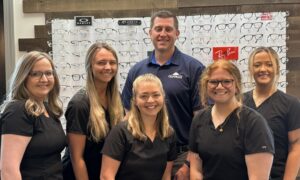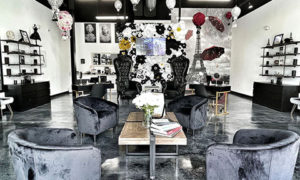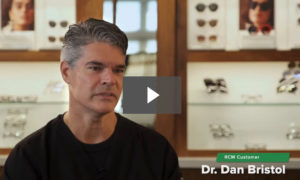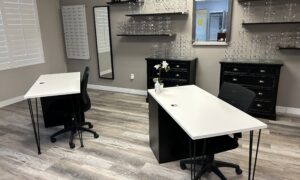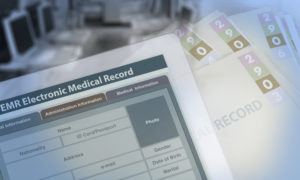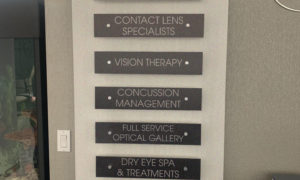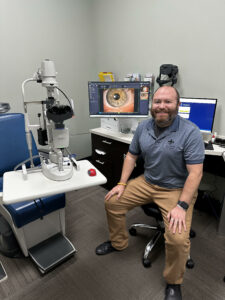
Dr. Cazares with his new exam room setup, including his new slit lamp. Dr. Cazares has seen great benefits to patient care and efficiency with the addition of advanced slit lamp technology.
Slit lamp technology for your practice.
By Ryan Cazares, OD
June 19, 2024
The ideal practice investments make it easier to provide thorough examinations while boosting efficiency and the patient experience.
Here are the details one such investment in our office, including how we are getting the most out of it.
What We Wanted to Achieve
We wanted to add technology that would allow us to more easily communicate changes that need to be made to specialty contact lenses, cutting down on time-eating, costly follow-ups.
Solution Decided On
We decided that we needed a slit lamp with advanced capabilities.
We invested in S390L (Firefly) Slit Lamp Microscope. Similar technology in this category includes, but is not limited to: ZEISS SL Imaging Solution and the iON Slit Lamp Imaging System, which is an attachment you can add to your current slit lamp that comes with a high-resolution iPhone to take anterior segment images.
How Much Did it Cost?
Our slit lamps were about $17,000 each. I purchased four of them.
I purchased these instruments outright because I prefer to acquire technology outright that we won’t necessarily use for billing insurance.
However, I was pleasantly surprised to see how many diagnoses codes are covered for 92285, which are facilitated by our new slit lamps.
My associate and I use the camera to not only capture fits of specialty contact lenses, but to document the appearance of ocular surface disease at the beginning of treatment and to perform meibomography.
Other Articles to Explore
How We Use the Technology to Positively Impact Patient Education
We do an interpretation and report with the patient, explaining how the photo taken is necessary to follow the progress made with treatment, and we use it as a baseline for comparison at follow-ups.
For example, I had a patient with a severe case of neurotropic keratitis. I took a photo and treated the patient with a Prokera membrane and Oxervate.
Two months later, I took new photos to show the patient his completely clear cornea next to photos of what it looked like before we began treatment.
Showing a patient a photo of their eye condition can help them more easily understand their symptoms and how we are going to treat them.
The educational component of showing the patient a picture is extremely valuable. Patients always come back to us because they say we do a better job of explaining their issues to them than other practices, and I believe the slit lamps will make us even better at this.
The wow factor the slit lamp camera provides is invaluable. Patients are shocked to see their meibomian gland atrophy or simply what their corneal abrasion looks like.
Patients will even ask us if they can snap a photo of the picture with their phones, and some will post on social media for free publicity! “My last eye doctor never showed me this!” is always music to my ears.
Buy More than One of Same Type for Easier Technology Networking
If you get more than one slit lamp of the same brand, as we did with the Firefly, you can network them so they all have the same patient database.
ROI on Investment
It’s difficult to measure the break-even for a slit lamp when its sole purpose is the eye examination itself. However, along with our Eaglet Surface Profiler, it helps me cut down on follow-ups. I expect the slit lamps to team with our scleral surface profiler to cut my scleral/specialty follow-ups in half, which will then free up time for more new scleral/patient evaluations.
When we are able to bill for external ocular photography, the average reimbursement is $27. That may not seem like a lot, but I will gladly take a $27 boost to my revenue-per-patient.
At our current pace for 2024, the 92285 code, which we are able to bill more often with help from our new slit lamps, should result in a $5,000 boost to revenue.
But, again, the wow-factor our slit lamps provide is invaluable. It helps separate our office from other clinics and keeps patients coming back.
 Ryan Cazares, OD, is the owner of Scott Eye Care in Scott, La. To contact him: dr.cazares@scotteye.com
Ryan Cazares, OD, is the owner of Scott Eye Care in Scott, La. To contact him: dr.cazares@scotteye.com





